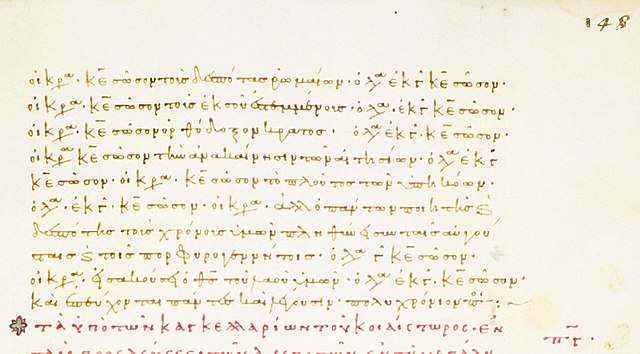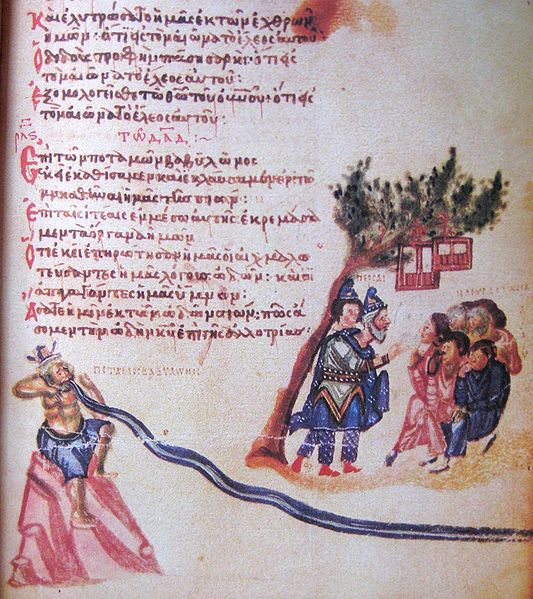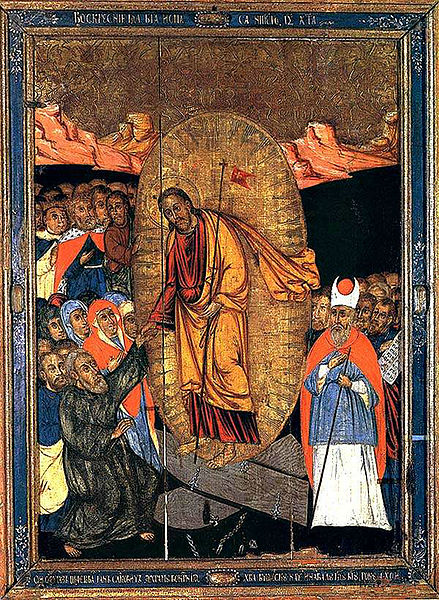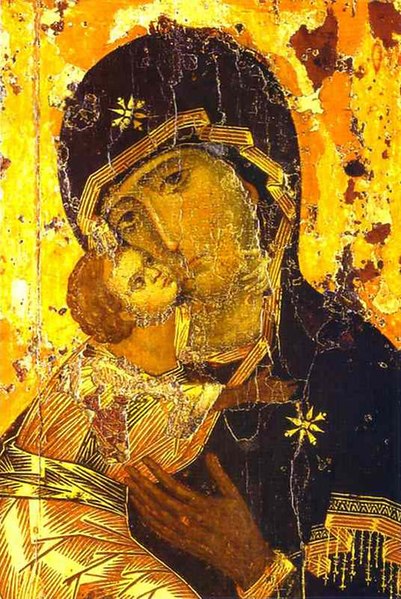Byzantine music originally consisted of the songs and hymns composed for the courtly and religious ceremonial of the Byzantine Empire and continued, after the fall of Constantinople in 1453, in the traditions of the sung Byzantine chant of Eastern Orthodox liturgy. The ecclesiastical forms of Byzantine music are the best known forms today, because different Orthodox traditions still identify with the heritage of Byzantine music, when their cantors sing monodic chant out of the traditional chant books such as the Sticherarion, which in fact consisted of five books, and the Irmologion.
Acclamation during the Louperkalia feast (15 February) at the hippodrome according to the Book of Ceremonies, book I chapter 82 (D-LEu Ms. Rep I 17, f.148r)
Chludov Psalter, 9th century (RUS-Mim Ms. D.129, fol. 135) River of Babylon as illustration of Ps. 137:1–3
Chludov Psalter, beginning of the canticles
Recitation of Psalm 85 κλῖνον, κύριε, τὸ οὖς σου καὶ ἐπάκουσόν μου "on Monday evening" (τῇ β᾽ ἑσπερ) in echos plagios devteros with a preceding troparion καὶ ἐπάκουσόν μου· δόξα σοι, ὁ Θεός in a liturgical manuscript around 1400 (GR-An Ms. 2061, fol. 4r)
Eastern Orthodoxy, otherwise known as Eastern Orthodox Christianity or Byzantine Christianity, is one of the three main branches of Chalcedonian Christianity, alongside Roman Catholicism and Protestantism. Like the Pentarchy of the first millennium, the mainstream Eastern Orthodox Church is organised into autocephalous churches independent from each other. In the 21st century, the number of mainstream autocephalous churches is seventeen; there also exist autocephalous churches unrecognized by those mainstream ones. Autocephalous churches choose their own primate. Autocephalous churches can have jurisdiction (authority) over other churches, some of which have the status of "autonomous" which means they have more autonomy than simple eparchies.
A 17th-century Russian Orthodox icon of the Resurrection
Our Lady of Tinos is the major Marian shrine in Greece
The Theotokos of Vladimir, one of the most venerated of Orthodox Christian icons of the Virgin Mary
Last Judgment: 12th-century Byzantine mosaic from Torcello Cathedral








